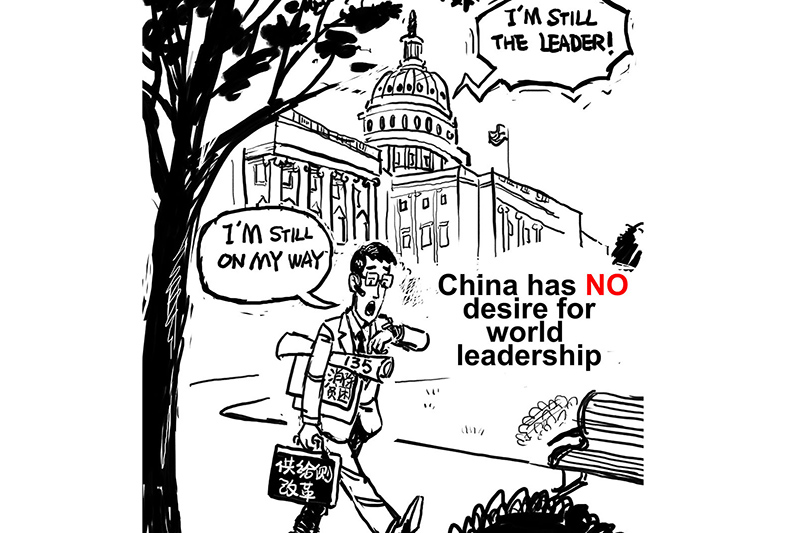Since the beginning of 2016, two things have stimulated the attention of the Chinese media and academia, the latter in particular. First, in his 2016 State of the Union address, President Obama, who has always been rather discreet, said in a rather high-profile manner, ‘The United States of America is the most powerful nation. Period. It’s not even close.’ Second, when opinion polls showed that leader of the Democratic Progressive Party (DPP) would undoubtedly win the election in Taiwan, Deputy National Security Advisor Ben Rhodes reiterated America’s one-China position. Four former secretaries of defense in a rare move jointly warned the incoming government in Taiwan to treasure the achievements in cross-Straits relations and avoid putting the US in a difficult position. After the election, an Under Secretary of State and a former Secretary of State both repeated the one-China policy and concerns over stability across the Taiwan Straits. The developments seem to suggest that the US remains confident in its global competition with China and that agitating pro-independence forces for China-US military confrontations to pin down Chinese development and stability is not part of America’s strategic considerations.

While commenting on President Obama’s 2015 State of the Union address, this author pointed out that the American government regarded competition in economic fields as the primary area of competition between the US and China for global leadership. Judging from the 2016 address, this strategic outlook has not changed. In the contests in international economic fields and in domestic economic development, the two countries demonstrated their respective strength in 2015.
First, in international-trade rulemaking, the US kept one step ahead of China by successfully concluding the Trans-Pacific Partnership Agreement (TPP) negotiations on Oct 5 involving 12 countries including the US, Japan and Australia. For China, the free-trade agreements signed with Korea and Australia on June 2 and 17 respectively helped create two major breaches in the wall of US-made trade rules.
In international finance and trade, the two countries also had their respective gains. As the US economy continues improving, the international position of US dollar has been further consolidated, with substantial increases in the exchange rate against major currencies including the RMB. Meanwhile, the Chinese manufacturing industry has shown remarkable international competitiveness. According to the Asian Economic Integration Report 2015 released by the Asian Development Bank, China accounted for 43.7% of the total high-tech products export in Asia in 2014, ranking No. 1. The shares of Korea and Japan were 9.4% and 7.7% respectively. According to US statistics, the total high-tech import in the US in the first three quarters of 2015 was $316.2 billion, among which over one-third was from China ($110.4 billion).
In the area of domestic economic or national strength development, an important area of China-US competition, the US has performed better. The administration’s policy to bring manufacturing back to the US has produced visible results, leading to effective technological progress, steady employment increase and an appreciating dollar. In contrast, the domestic economic situation in China has worsened, with aggravated capacity excesses, more companies forced out of business and increased debts for local governments, leading to substantial pressure on the financial and macro economic situation. The once widely publicized Beijing Consensus or China Model was objectively challenged. The model of government-led development and the industrial structure shaped by government investment face readjustment. The American experience in economic governance has also attracted increasing attention from China.
At the end of October 2015, Chinese media intensively reported on American surveillance planes flying over waters near islands and reefs controlled by China in Nansha Islands, causing an uproar in China over the violation of Chinese sovereignty. Soon it was suggested that American military planes had done similar flights before and that reefs below the sea level do not enjoy the 12-nautical-mile territorial sea. Nonetheless, there is wide suspicion in China of the US deliberately provoking military frictions to tie down China’ stable development. Against this backdrop, the official American statement on adhering to one-China principle and hope for peace and stability across the Taiwan Straits helped mitigate suspicions in China and further testified to the American strategic plan to engage in competition with China mainly in the economic field.
Competition between states is competition over international strategy and policy only to a certain extent. In the final analysis, it is competition over overall national strength, economic strength in particular. In the bleak economic situation, even the mighty Russian President Putin had to try seeking compromise with the West, which is the latest example of national strength failing to underpin diplomatic strategy or action. The economic focus of China-US competition has had positive influence on industrial technological progress throughout the world and will help the two countries to develop competitive cooperation and for China to readjust and reform its domestic policies.
